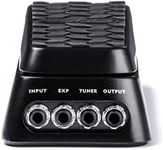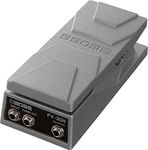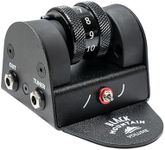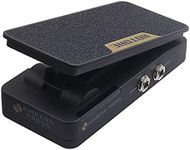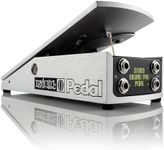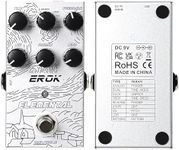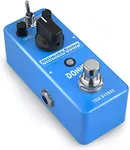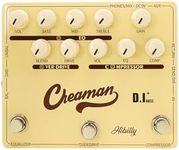Buying Guide for the Best Volume Pedals
When it comes to choosing a volume pedal, it's important to understand that this device can significantly impact your overall sound and performance. A volume pedal allows you to control the volume of your instrument dynamically, which can be crucial for creating smooth transitions, swells, and maintaining balance in your sound. To make the best choice, you need to consider several key specifications that will determine how well the pedal meets your needs and integrates with your setup.Type (Active vs. Passive)Volume pedals come in two main types: active and passive. An active volume pedal requires a power source (usually a battery or power adapter) and often includes a buffer to maintain signal strength. This is important if you have a long signal chain or use multiple pedals, as it helps prevent signal loss. A passive volume pedal does not require power and relies on a simple potentiometer to control volume. It's generally more straightforward and can be a good choice if you prefer a simpler setup or have a shorter signal chain. Choose an active pedal if you need to maintain signal integrity over long distances or through many effects, and a passive pedal if you want simplicity and don't have issues with signal loss.
ImpedanceImpedance refers to the resistance of the pedal to the electrical signal passing through it. This is important because matching the impedance of your volume pedal with your instrument and other pedals ensures optimal performance and sound quality. Volume pedals typically come in high-impedance (for passive pickups like those in electric guitars) and low-impedance (for active pickups or line-level signals) versions. If you're using a passive guitar, a high-impedance pedal is usually the right choice. For active pickups or if you're placing the pedal after buffered effects, a low-impedance pedal is more suitable.
TaperThe taper of a volume pedal describes how the volume changes as you move the pedal. This can be linear or logarithmic. A linear taper means the volume increases evenly as you press the pedal, while a logarithmic taper means the volume change is more gradual at the beginning and more pronounced towards the end. This is important for achieving the desired control over your volume swells and dynamics. If you need precise control over gradual volume changes, a logarithmic taper might be better. For more straightforward volume adjustments, a linear taper could be sufficient.
Size and Build QualityThe size and build quality of a volume pedal can affect both its durability and how it fits into your pedalboard setup. A larger pedal might offer more precise control and be more comfortable to use, but it will take up more space. Build quality is crucial for ensuring the pedal can withstand regular use, especially if you perform frequently. Look for pedals made from sturdy materials like metal, and consider the size based on your pedalboard space and how much control you need. If you have limited space, a smaller pedal might be necessary, but ensure it still offers the durability and control you require.
Additional FeaturesSome volume pedals come with additional features such as tuner outputs, expression pedal functionality, or minimum volume settings. These can add versatility to your setup. A tuner output allows you to connect a tuner without affecting your signal chain. Expression pedal functionality means the pedal can also control other effects parameters, adding more flexibility. Minimum volume settings let you set a baseline volume level, which can be useful for maintaining a consistent minimum volume. Consider these features based on your specific needs and how they might enhance your playing experience. If you need more versatility, look for pedals with these additional features.

